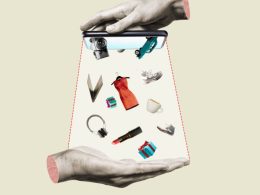Instagram users from China enter the world of virtual fashion, wearing NFT clothing.
The Chinese social media site Xiaohongshu, which translates to “Little Red Book” in English and is the Middle Kingdom’s equivalent of Instagram with over 148 million daily users, is creating specialized services for fashion bloggers who wish to flaunt their outfits in NFT-based virtual versions.
If that sounds confusing, Linersan, a video blogger with 13,000 followers on Xiaohongshu, has explained how it works in a video where she discusses her experience purchasing and donning virtual NFT attire. First off, in “R-Space,” Xiaohongshu’s NFT marketplace, these virtual garment NFTs made their debut in April. To create a virtual outfit, Linersan claims she purchased the NFT and sent it to a designer along with images of herself. She stated in the video that she needs to email the designer the special code of the virtual dress NFT, and then supply a photo of herself that the fashion designer uses to show her ‘wearing’ the garment,’. According to Linersan, the fashion designer advised “simply posing like you’re truly wearing it” in the photograph. Three days later, the photographs of her wearing the computer-generated “Galaxy Heart” dress surfaced. The photo cost 399 yuan, or roughly USD 60. However, extra copies are 150 yuan apiece. While her photo of herself wearing the outfit only received about 1,500 likes, the video received 20,000. NFT clothing, however, only lasts a short time, according to Linersan’s video. She states in the conclusion of the video: “This also helped me understand the truth – after wearing it once for photos, the costume’s lifespan has been exhausted.” The prices of these virtual costumes on Xiaohongshu range from 20 yuan (about $3) for a headpiece to 5,000 yuan (around $745) for a dress with a sci-fi motif. In the R-Space shopping window, there are virtual shoes, jewelry, bags, and even manicures. Since May, virtual fashion designers have been sought after by Xiaohongshu, who appears to see financial potential in NFT clothing. Since June 10, it has started promoting new clothing on the NFT marketplace every Friday. On Xiaohongshu, NFT fashion blogger Jane Xu claimed to have bought 24 NFT products and published 13 posts with images of herself wearing digital clothing. To present apparel businesses and styles to trend-conscious consumers, according to Xu, is the same as being a frequent reviewer. She claimed that the NFT job had the advantages of being more environmentally responsible and having uncluttered closets. Like Linersan, she typically won’t “wear” an NFT dress again after posting about it online. Although Xu now has fewer than 1,000 followers on Xiaohongshu and the majority of her virtual fashion postings receive fewer than 10 likes, she claims that the trend for virtual NFT clothes is just starting, and she wants to be involved. While consumers are clamoring for improved NFT virtual clothes, this trend is still finding its footing right now even though it may catch on. According to Linersan in her video, the present metaverse clothes can only be “worn” on a static image, which is restrictive and demonstrates the technology’s early stages. The poor graphic quality of Chen Peng’s attempts at digital fashion has drawn criticism from other users on Xiaohongshu. The studio created NFT clothing for the online idol AYAYI and uploaded the image on Xiaohongshu, however, the full body portrayal was criticized as being inadequate. Virtual fashion is still in its infancy, according to Chen Bin, the chief executive officer of 3-D clothing designing software provider Linctex, which offered the 3D rendering service for Xiaohongshu’s debut of a virtual garment. The computer power and awkward AR/VR headsets are the bottlenecks. The GPU’s computational capacity needs to be doubled by one to two times, or quadrupled, preferably, before many technical issues can be resolved, according to Chen, who believes that the next turning point in virtual fashion will occur three to five years from now. Another approach to addressing these issues is through cloud computing.
According to fashion designer Chen Peng, virtual fashion poses problems that require further answers. Only when the individual is standing can superior compositing results and visual effects be achieved using the present approaches. Digital fashion is a priority area for NFT enterprises, according to Kirin Lee, CEO of R-Space, Xiaohongshu’s NFT marketplace. This is because it may promote viral sharing and community involvement, drawing consumers’ attention to a larger variety of digital works.







